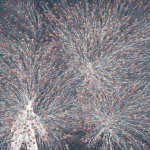The fusion of art and technology is not a new concept. Yet, how technology influences and enhances the creative process in art and design continues to evolve and intrigue. From graphic design to fine arts, technology has transformed the way artists and designers create, collaborate, and make their work more accessible to the public. This article aims to explore how the integration of cutting-edge technology is streamlining and enhancing the creative process within the realms of art and design.
The Digitization of Art and Design
The advent of the digital age has revolutionized the world of art and design. With a plethora of digital tools at their disposal, artists and designers can now express their creativity in ways that were unimaginable a few decades ago.
A lire également : What Are the Ethical Considerations in the Use of AI for Surveillance and Security?
In the realm of graphic design, digital software such as Adobe Illustrator, InDesign, and Photoshop have become industry standards. These tools have not only sped up the design process but also opened up a world of possibilities for visual effects and manipulation. Sketching, retouching, and 3D modeling can now be done with a precision and consistency that traditional tools could never achieve.
The role of technology goes beyond providing new means of creation. It also allows for an unprecedented level of accessibility and collaboration. With cloud-based platforms, artists and designers can work together in real-time, share their work with others, and receive instant feedback.
Dans le meme genre : How Are Microbial Fuel Cells Being Used to Generate Sustainable Energy?
The Rise of Generative Design
A significant breakthrough in the design industry is the emergence of generative design. This is a design method that involves the use of algorithms and artificial intelligence (AI) to generate designs based on specific inputs.
Generative design can be seen as a partnership between human designers and AI. The designer sets the goals and constraints for the project, and the AI generates a multitude of design options that meet these parameters. The designer can then choose the most suitable design or combine different elements from various designs.
This process can lead to more efficient and innovative designs that may not have been conceived by a human alone. It also allows designers to focus more on the creative aspects of their work, as the AI takes care of the more tedious or complex computational tasks.
The Impact of Virtual and Augmented Reality
Virtual Reality (VR) and Augmented Reality (AR) are technologies that have found a significant place in the world of art and design. These technologies provide immersive experiences by creating a three-dimensional, computer-generated environment.
In the realm of art, VR and AR have opened up new ways for artists to engage with their audiences. Artists can now create immersive experiences that challenge the traditional boundaries of art. Viewers can interact with the artwork, become part of the story, and experience art from different perspectives.
In terms of design, VR and AR provide designers with new tools to visualize and communicate their ideas. For instance, architects and interior designers can create virtual walkthroughs of their designs, allowing clients to experience the space before it’s physically built.
The Influence of 3D Printing
3D printing is another technological innovation that is impacting the art and design world. This technology allows for the creation of three-dimensional objects from a digital file, layer by layer.
3D printing has democratized the creation process, making it possible for anyone with access to a 3D printer to create complex objects. This has broadened the possibilities for artists and designers, allowing them to experiment with new forms and materials.
For instance, in the fashion industry, designers are using 3D printing to create intricate accessories and even entire garments. In the world of fine arts, artists are using 3D printers to produce sculptures and installations that would be extremely difficult, if not impossible, to create by hand.
The Power of Social Media and Online Platforms
In today’s digital age, the role of social media and online platforms in promoting creativity cannot be overlooked. These platforms provide artists and designers with a global stage to showcase their work, gather feedback, and engage with a global audience.
For many artists and designers, social media has become an essential part of their creative process. Platforms such as Instagram, Pinterest, and Behance are filled with creative content, providing endless inspiration. They also serve as a platform for artists and designers to share their work, connect with other creatives and potential clients, and engage in meaningful conversations about art and design.
As we can see, technology has undoubtedly become an integral part of the creative process in art and design. It has given artists and designers new tools to create, collaborate, and share their work while also pushing the boundaries of what is possible in the realm of creativity. As technology continues to evolve, it will undoubtedly continue to shape and influence the creative process in exciting and unpredictable ways.
Harnessing Artificial Intelligence and Machine Learning in Creative Design
The role of artificial intelligence (AI) and machine learning in the creative process is becoming increasingly prominent. These advanced technologies are revolutionizing the landscape of the design industry, offering a new approach to creative work.
AI-powered tools are enabling artists and designers to automate repetitive tasks, leaving more time for human creativity to flourish. For instance, AI can analyze vast amounts of data to identify trends and patterns, providing valuable insights that can inform the design process.
Similarly, machine learning algorithms can learn from previous designs and continually enhance their capabilities, resulting in increasingly sophisticated generated content. This combination of artificial intelligence and machine learning is driving innovation, allowing artists and designers to push boundaries and experiment with new ideas.
Moreover, these technologies are becoming more user-friendly, with intuitive user interfaces that make it easier for artists and designers to harness their power. For example, popular graphic design tools now incorporate AI to suggest design elements, automate layout creation, and even generate rich text content.
Further, the use of AI and machine learning in design has implications for the user experience. By using data-driven insights, designers can create products that are tailored to the preferences and needs of their audience, resulting in a more personalized and engaging user experience.
Creative Automation and User-friendly Design in the Digital Age
Technology has not only enhanced the creative process in art and design but also democratized it. With the advent of creative automation tools, more people can participate in the creative process, irrespective of their technical skills.
Creative automation is all about using technology to automate certain aspects of the creative process. This can involve anything from automating the creation of basic graphic designs to employing AI to generate content. By automating these tasks, artists and designers can focus on the more strategic, creative aspects of their work.
User-friendly design tools have also leveled the playing field. Advanced design software now comes with intuitive interfaces and in-built tutorials, making it easier for beginners to get started. This has opened up the world of design to a wider audience, allowing more people to express their creativity.
In addition, automation and user-friendly design have profound implications for product design. With these technologies, designers can rapidly prototype and iterate on their ideas, resulting in more innovative products.
Conclusion
In summary, technology has significantly streamlined and augmented the creative process in art and design. Digital tools have revolutionized the way artists and designers work, enabling them to create more efficiently and push boundaries with their creative work.
The advent of AI and machine learning has been particularly transformative, automating repetitive tasks and providing data-driven insights that enrich the design process. At the same time, creative automation and user-friendly design tools have made the creative process more accessible, fostering a more inclusive design industry.
Looking forward, as technology continues to evolve, we can expect it to play an even greater role in the world of art and design. As the boundaries between human creativity and machine-generated content continue to blur, it will be fascinating to see how the creative process evolves in response. Ultimately, the fusion of technology and creativity is driving a new era of innovation in art and design.






